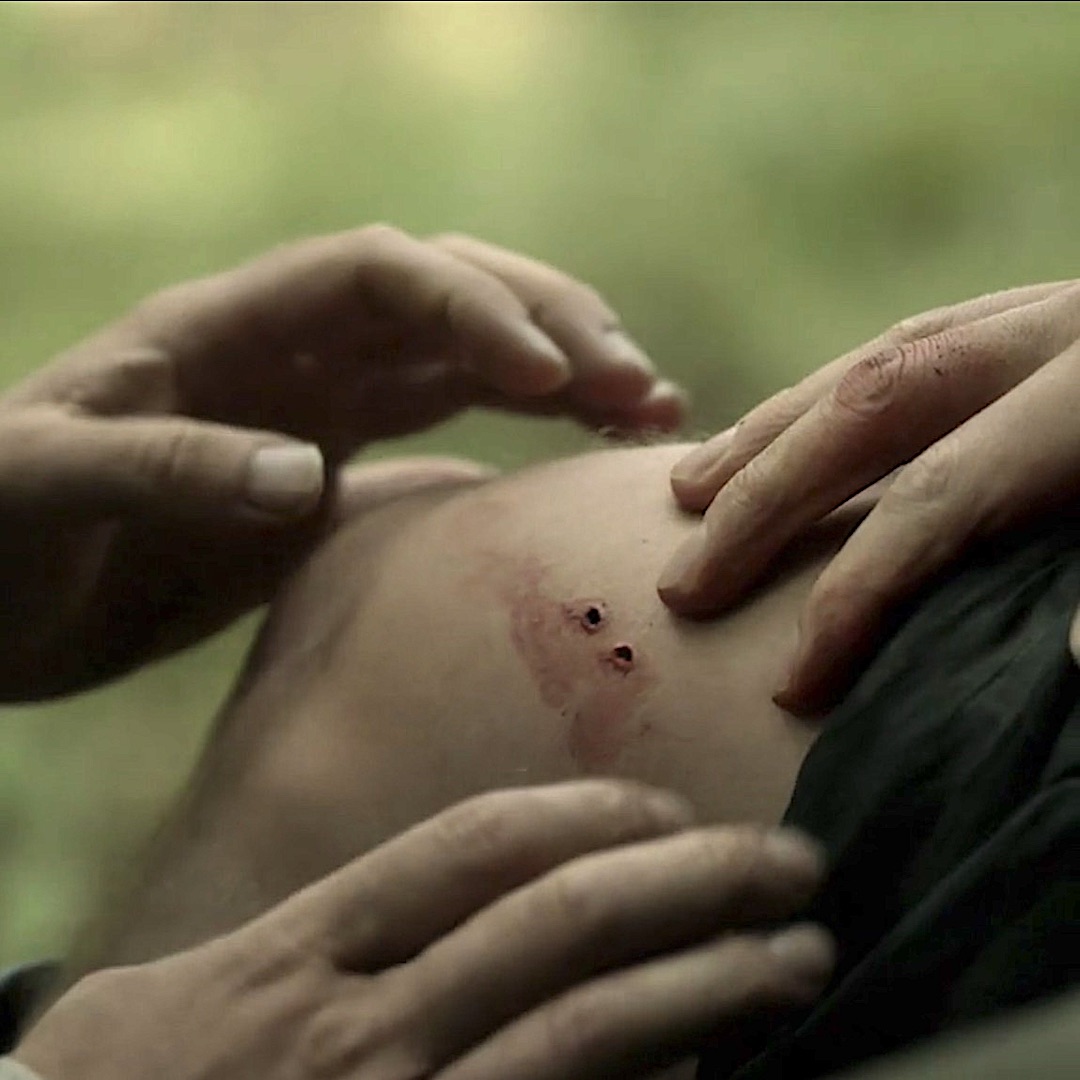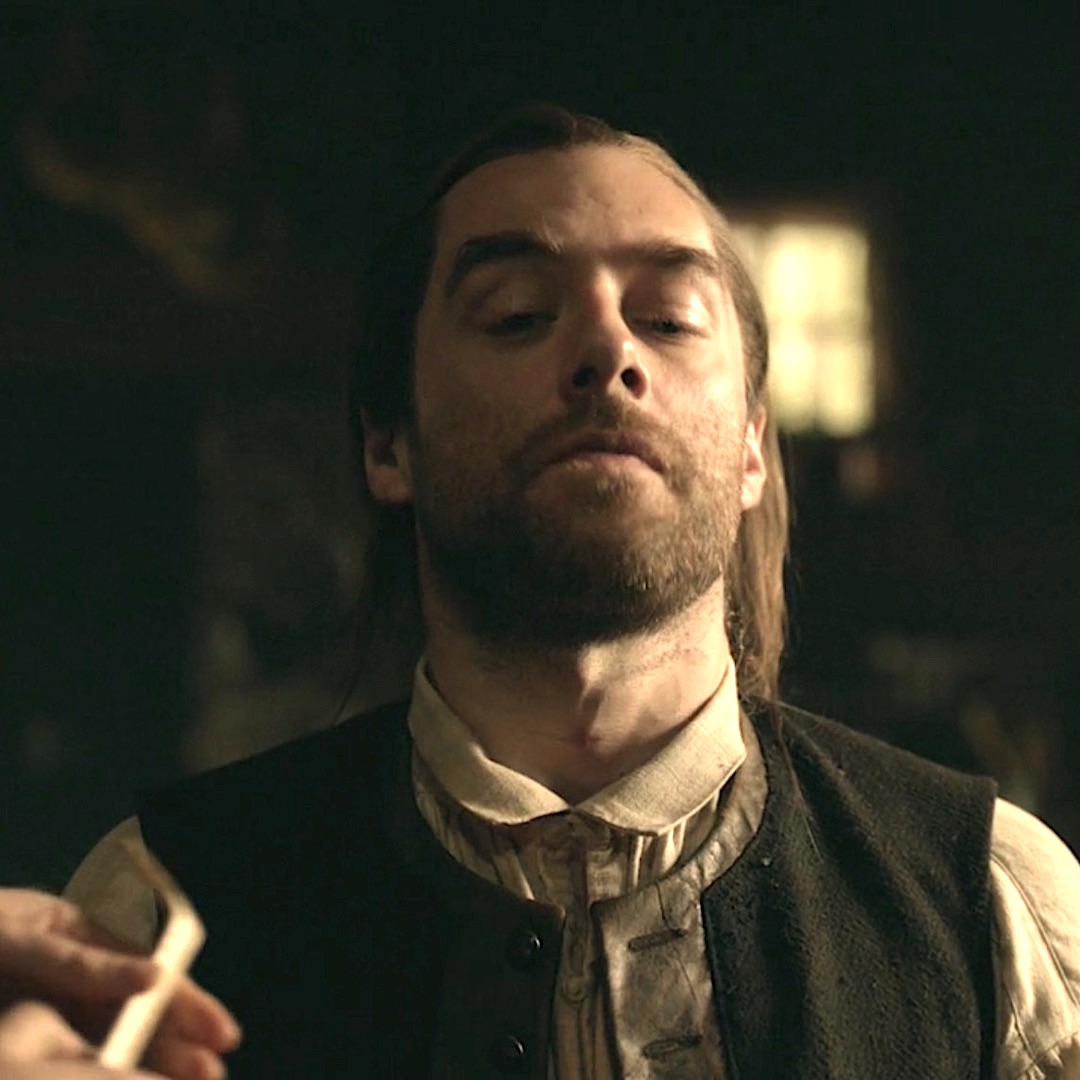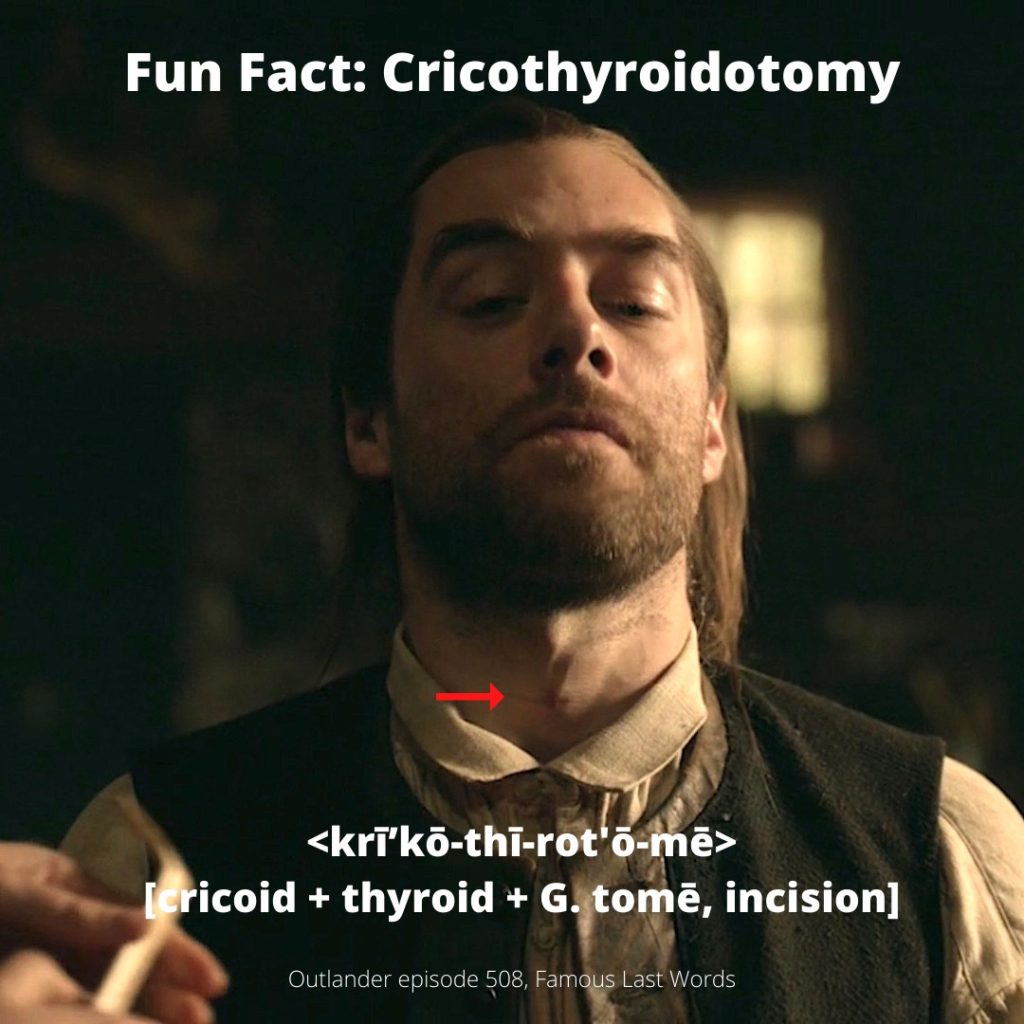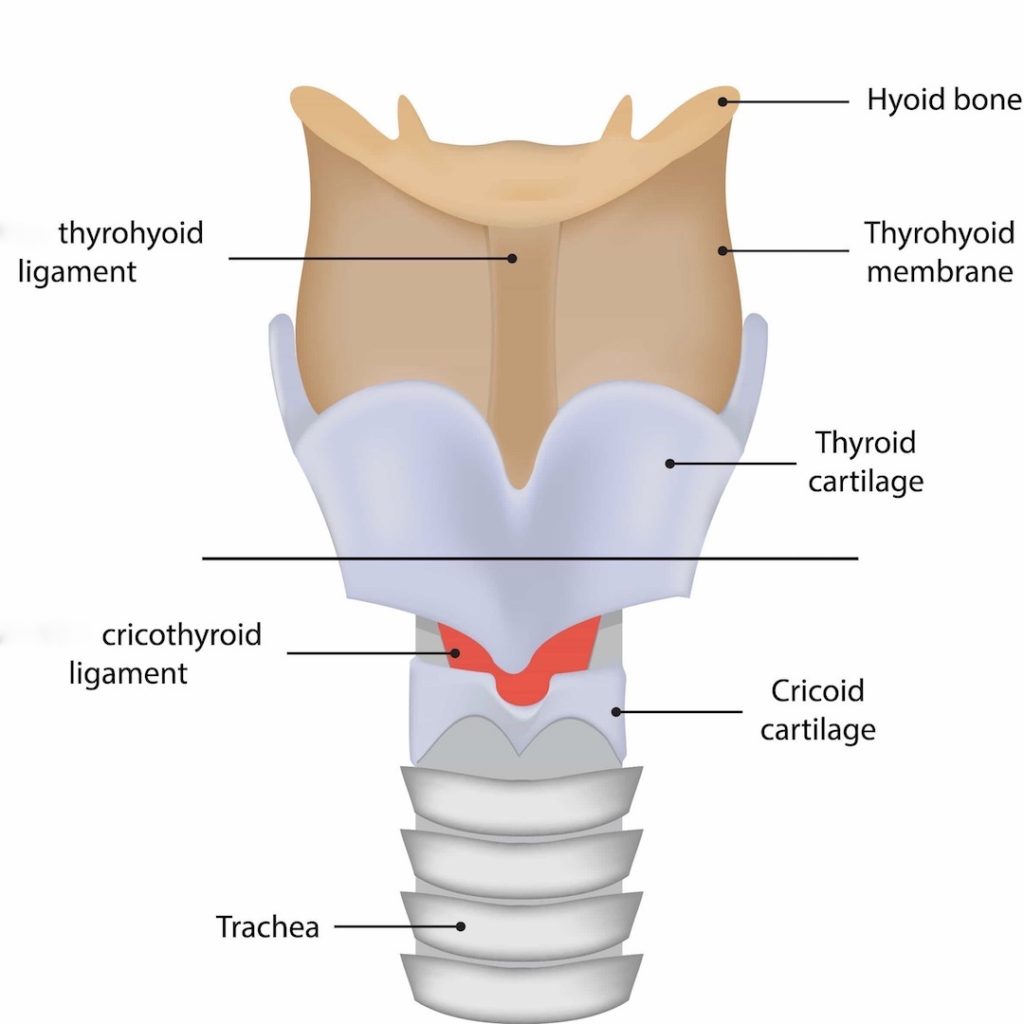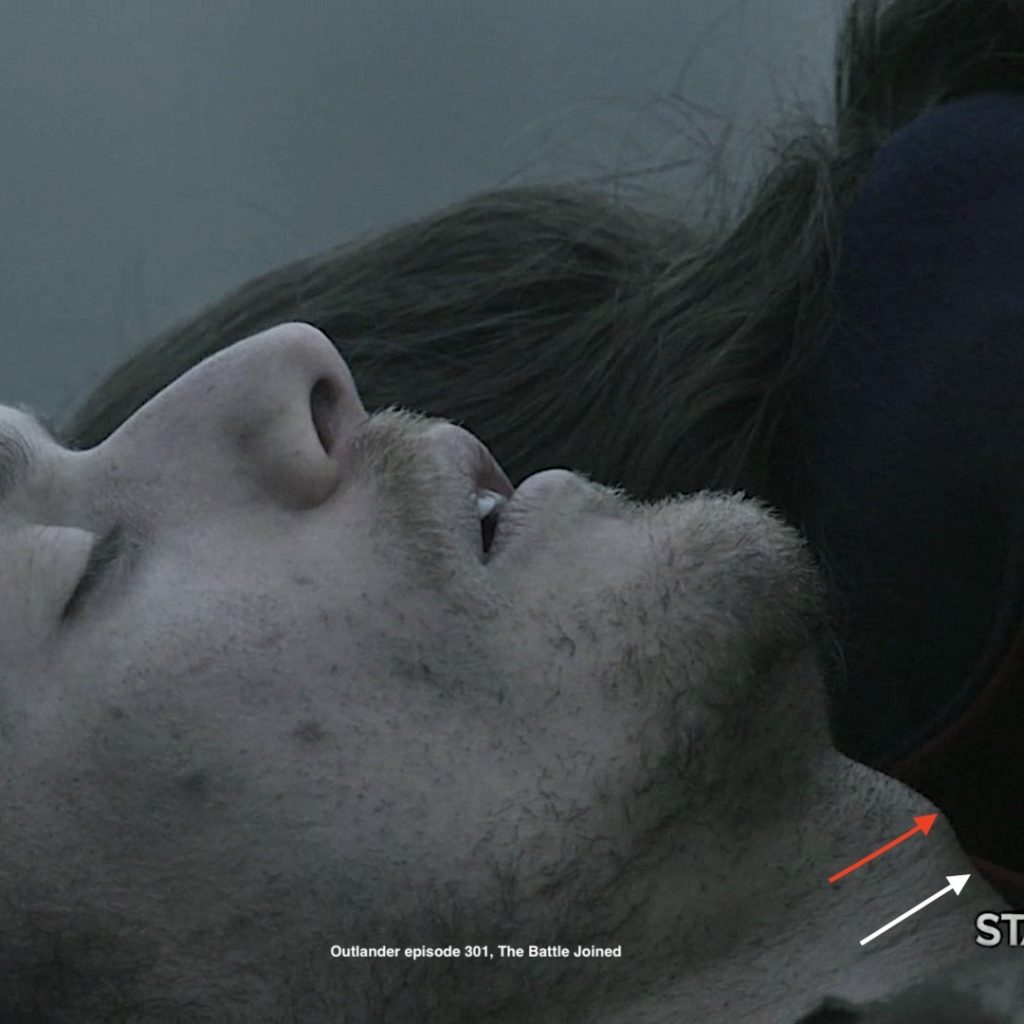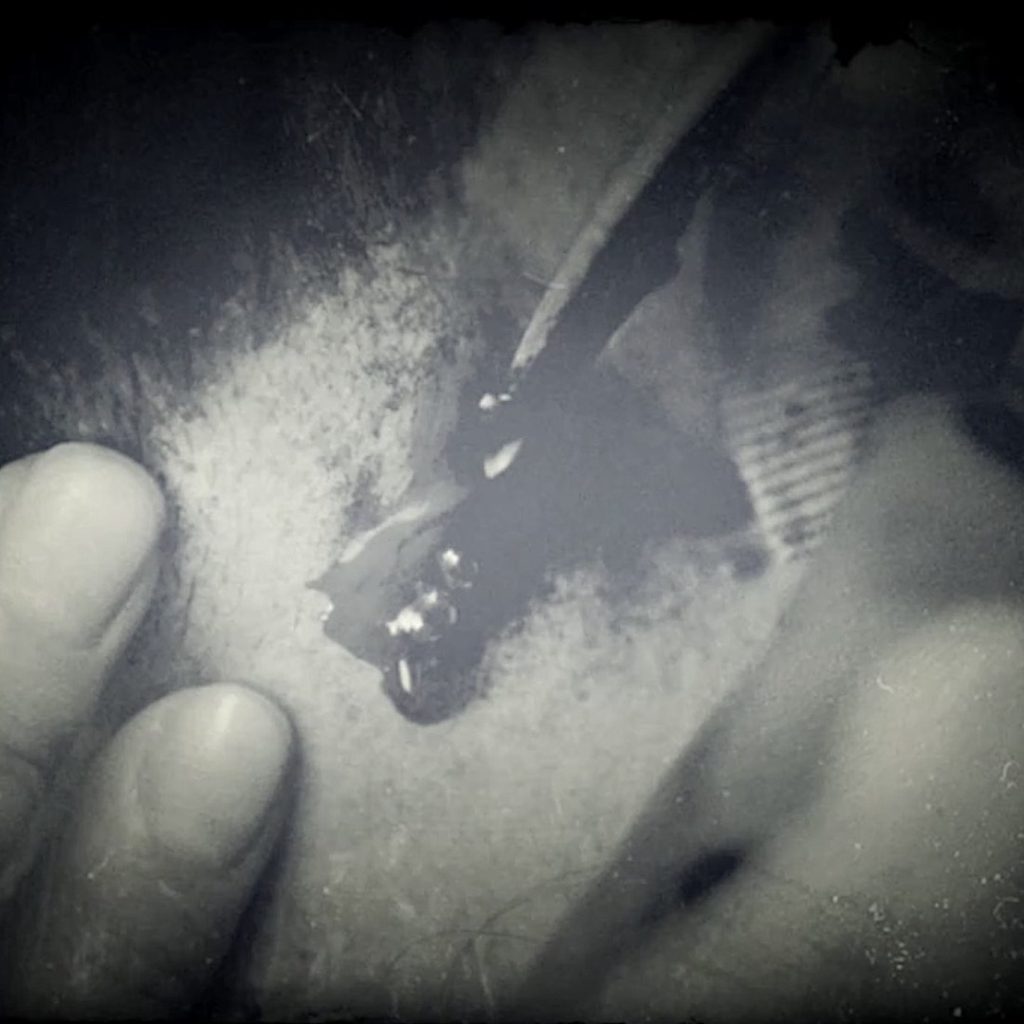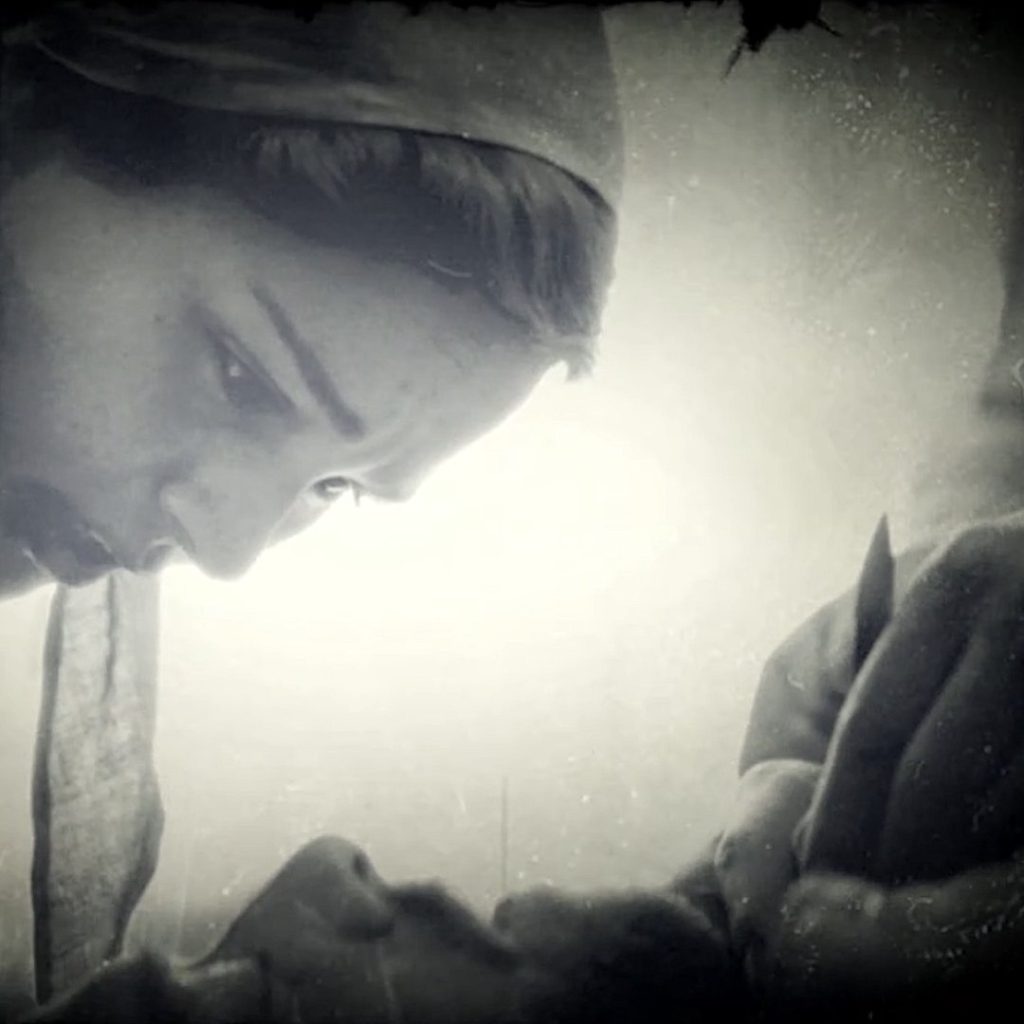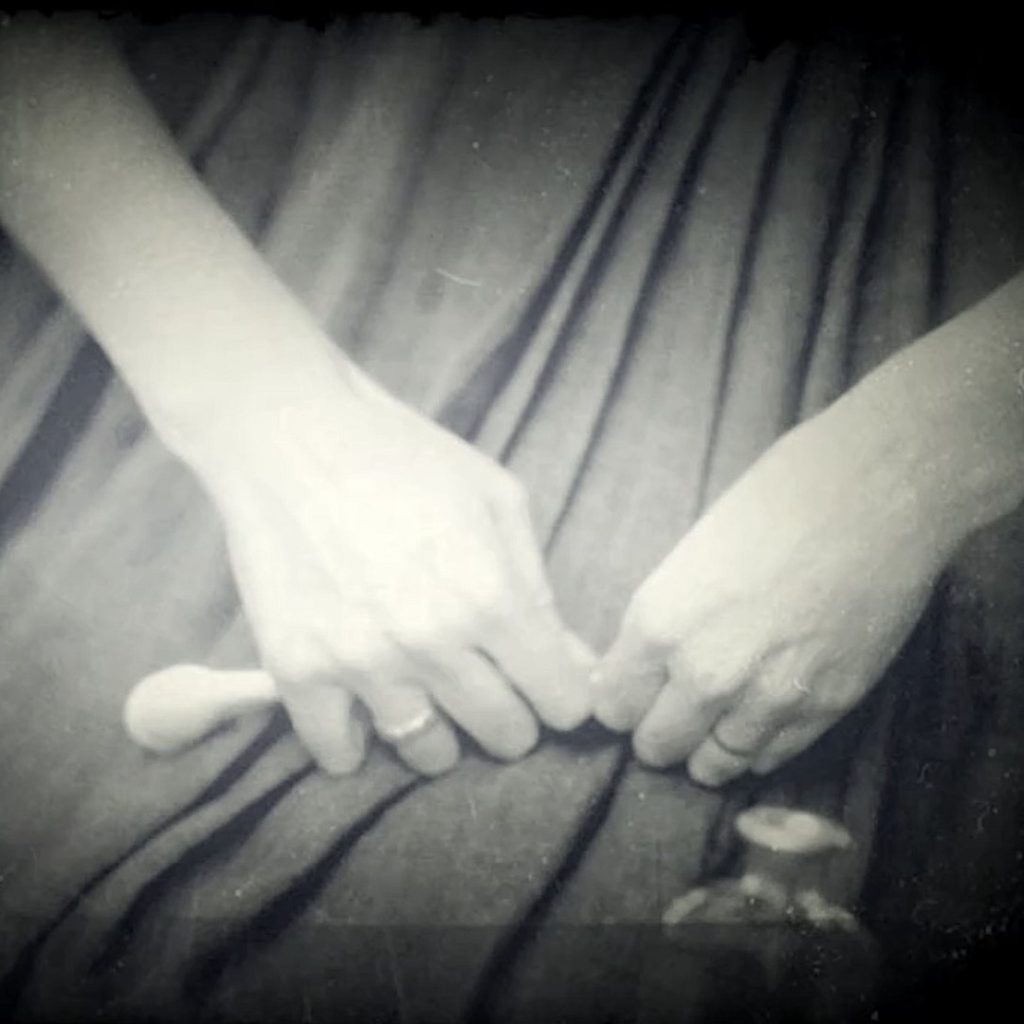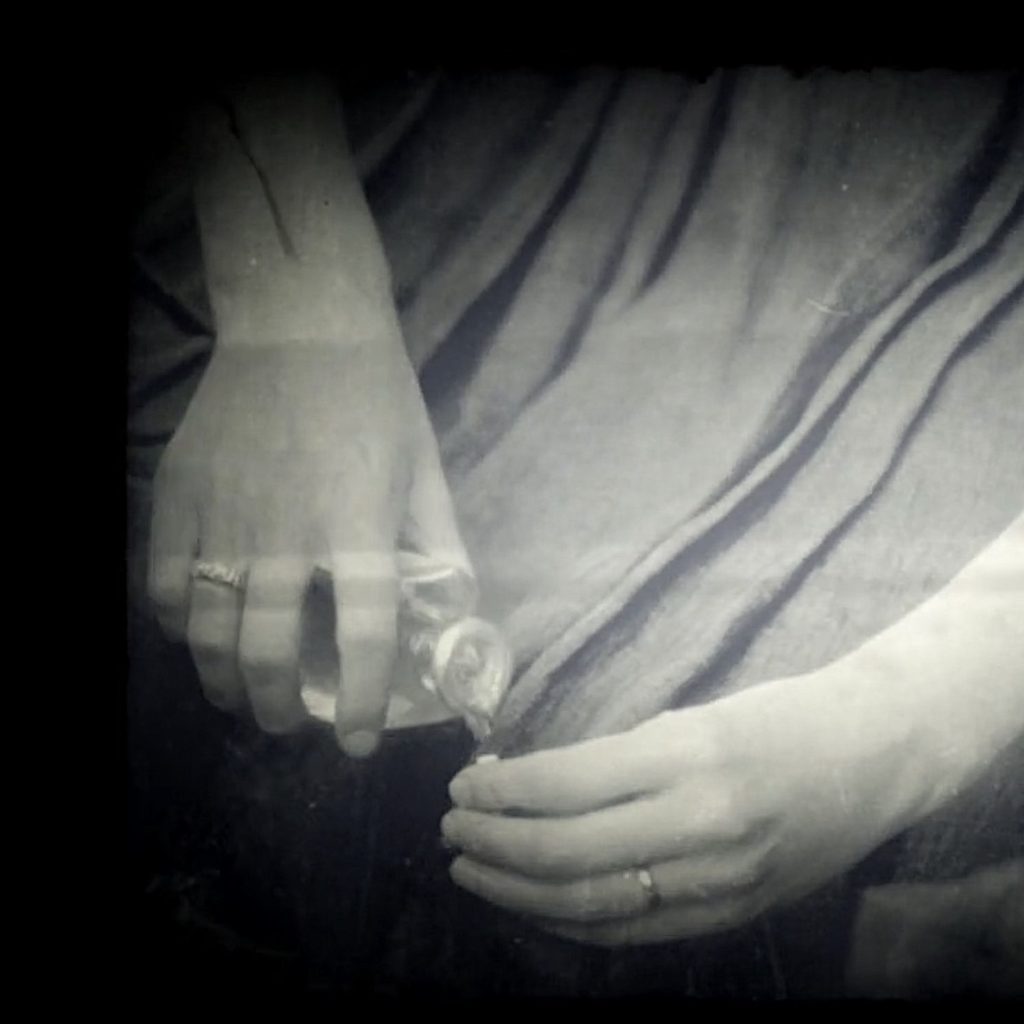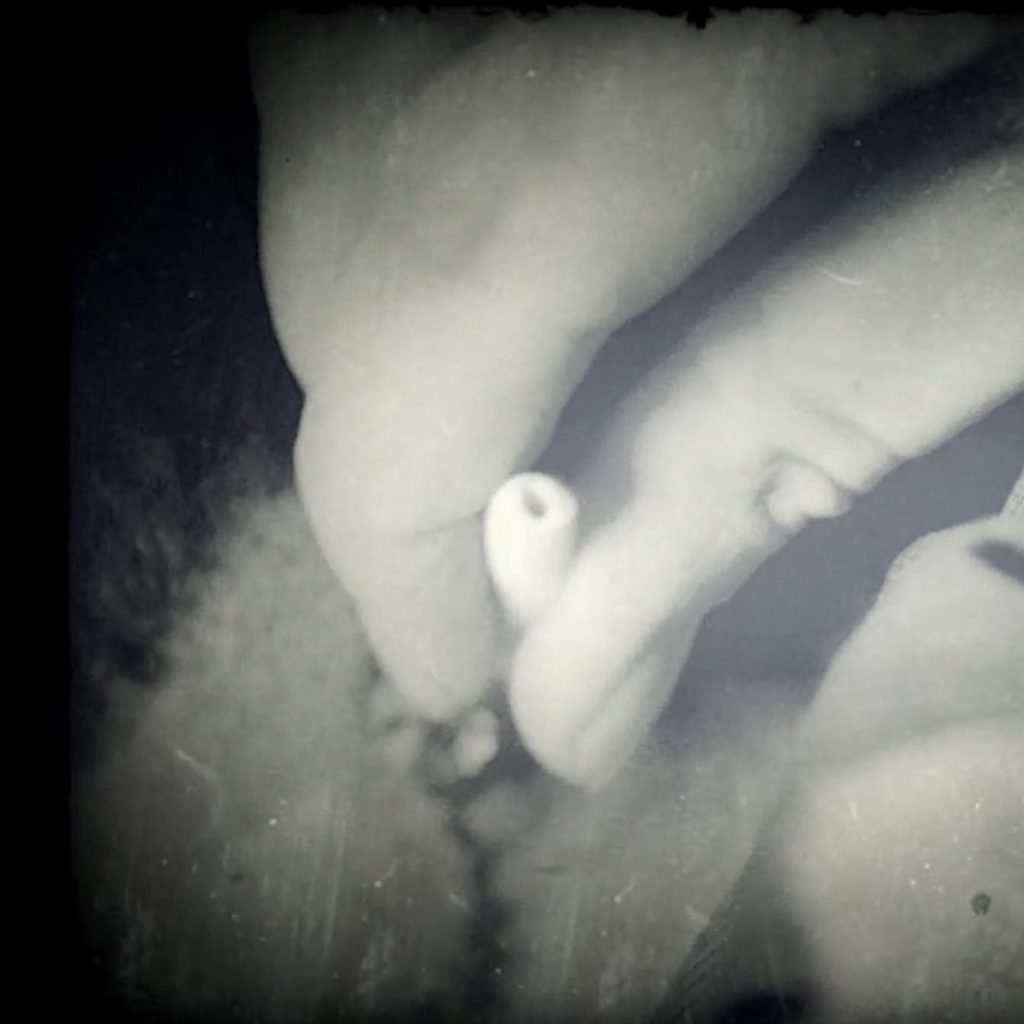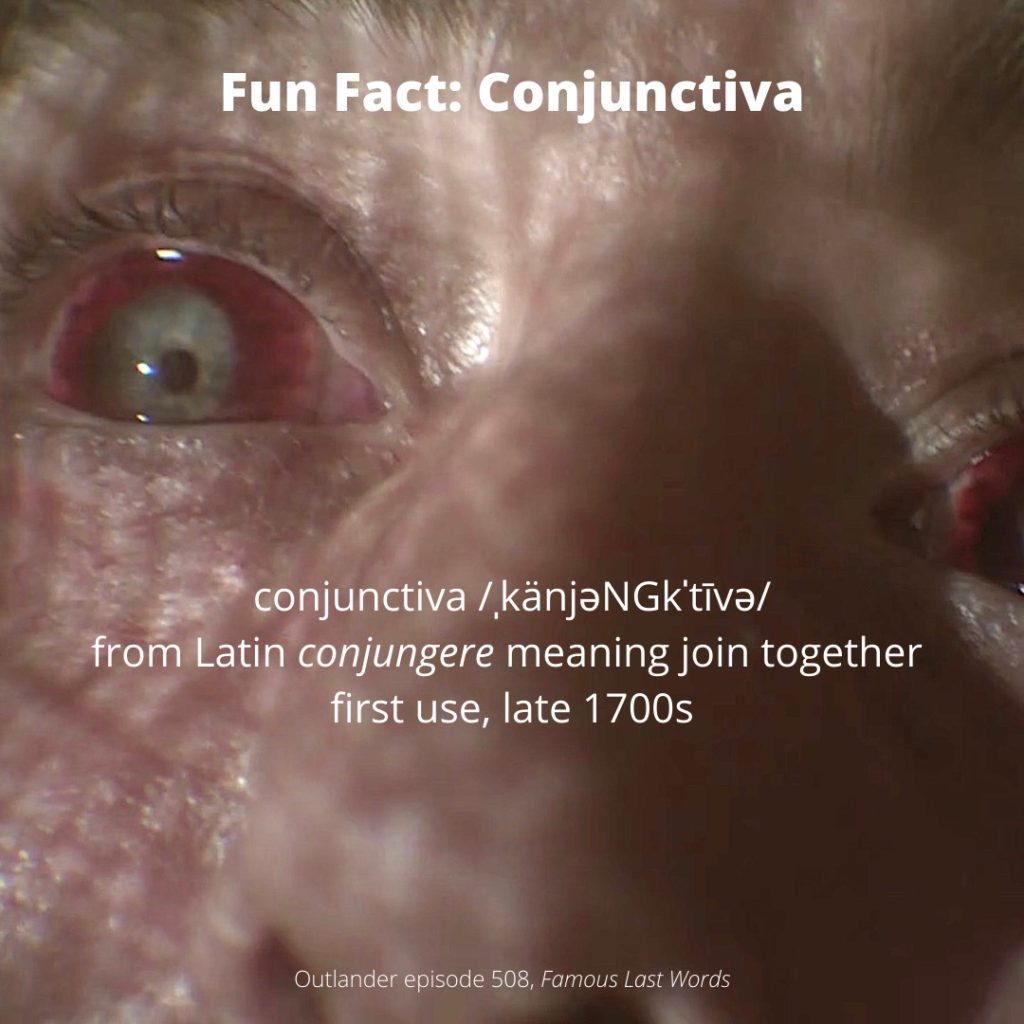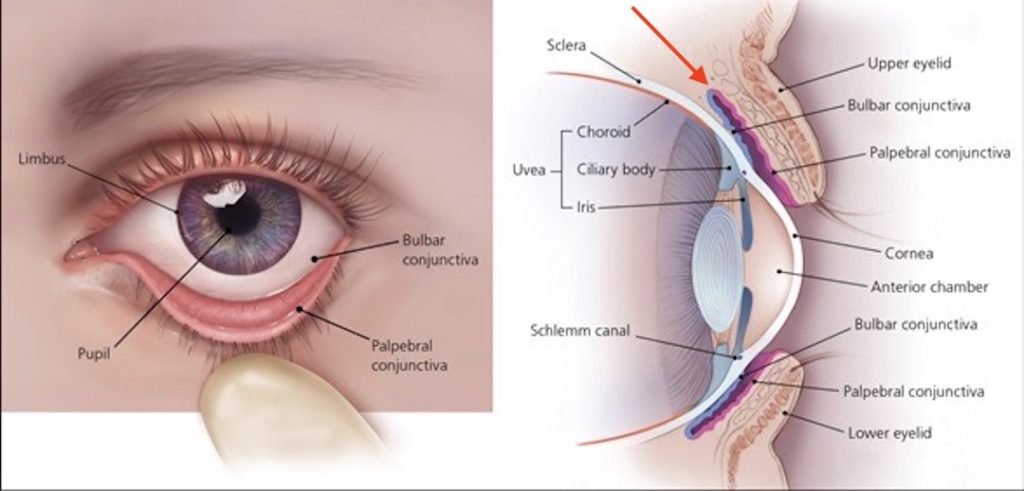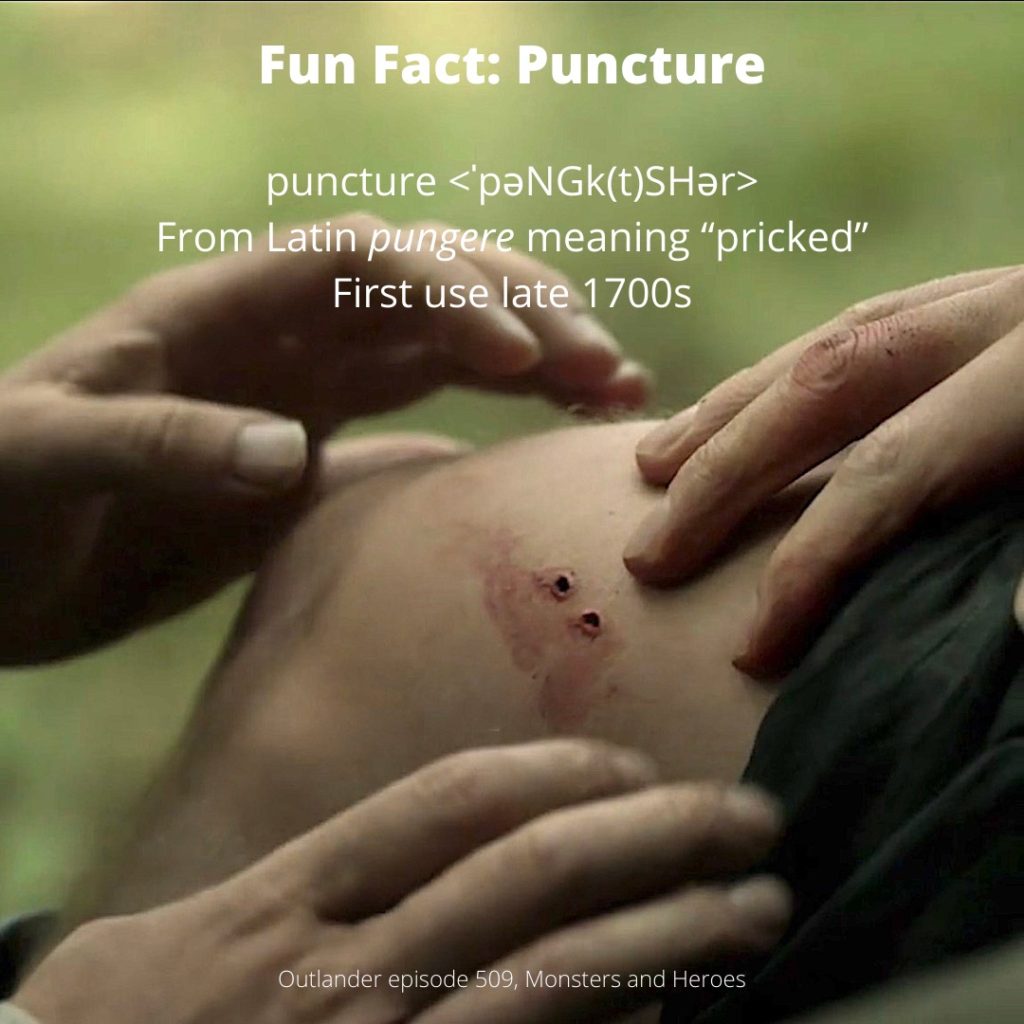
Anatomy Def: Puncture wound are deep injuries caused by sharp and pointed objects.
Outlander def: Och! Jamie’s painful bite-site! 🐍🐍🐍
Learn about puncture wounds in Anatomy Lesson #35, Outlander Owies.
Puncture wounds are a specific type of injury caused by sharp, pointy objects such as animal teeth/fangs, metal nails or thorns. This wound has very specific characteristics:
-
-
- Small opening(s)
- Little bleeding
- Difficult to clean
- Easily infected
-
Why are puncture wounds are prone to infection? Because:
-
-
- Bleeding helps cleanse a wound
- Little oxygen reaches deep wound
- Some organisms flourish in low oxygen environments
-
Important Fact: If the injured person hasn’t had a tetanus shot in the past five years, if the wound is deep, and if it is difficult to clean, a tetanus shot/booster is usually recommended – within 48 hours of the puncture!
Snake: Are you curious about which snake sunk its foul fangs into the vastus medialis of Jamie’s splendid quadraceps muscle?
I am not a herpetologist, but a quick Internet search reveals that North Carolina currently has six types of venomous snakes. ( I assume North Carolina’s current population of venomous snakes is the same as in the 1700s):
-
-
- Copperhead
- Timber rattlesnake
- Pigmy rattlesnake
- Eastern diamondback rattlesnake
- Eastern coral snake
- Cottonmouth (water moccasin)
-
Read Diana’s description from The Fiery Cross of the snake:
It was motionless now, quite obviously dead. Still, it took some effort of will to pick the thing up. It was as thick around as his wrist and nearly four feet long. It had begun to stiffen; in the end, he was obliged to lay it across the armload of firewood, like a scaly branch. Seeing it so, he had no trouble imagining how the snake … had escaped notice; the subtle browns and grays of its patterns made it nearly invisible against its background.
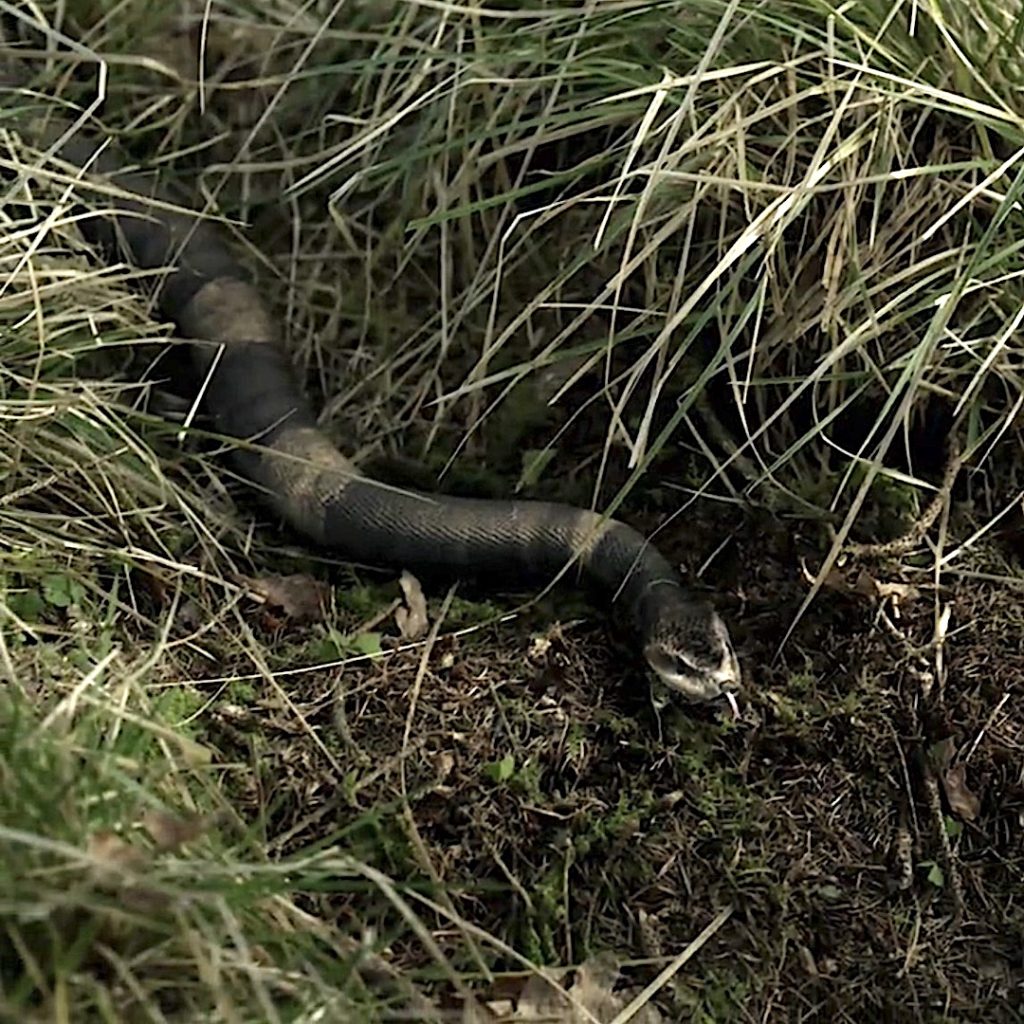
Diana’s description and the appearance in the show seems most consistent with the cottonmouth: Subtle grays and browns, indeed!
Problem is, cottonmouths are only found in eastern North Carolina and not in Fraser’s Ridge territory. So, hard to be sure. But, here is what one looks like.
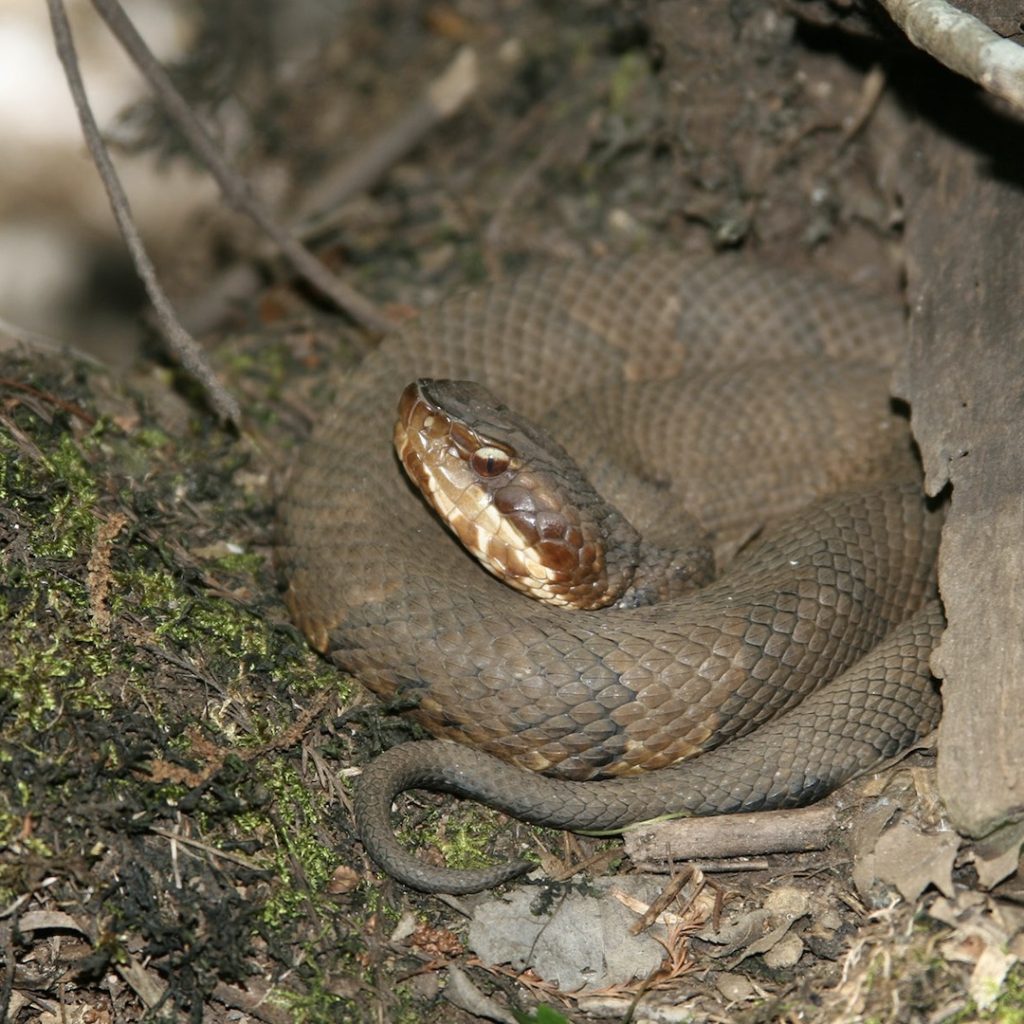
Moving on!
Roger’s Efforts: So, how did Roger do at treating the snake bite?
Weil…….
-
- Roger cut the wound!
He braced himself to the necessary force, stabbed hard and cut quick—two X marks over the punctures, just as the first-aid guides said. The wounds were bleeding a lot, blood pouring down in thick streams. That was good, though, he thought. He had to go deep; deep enough to get beyond the poison. He dropped the knife and bent, mouth to the wounds.
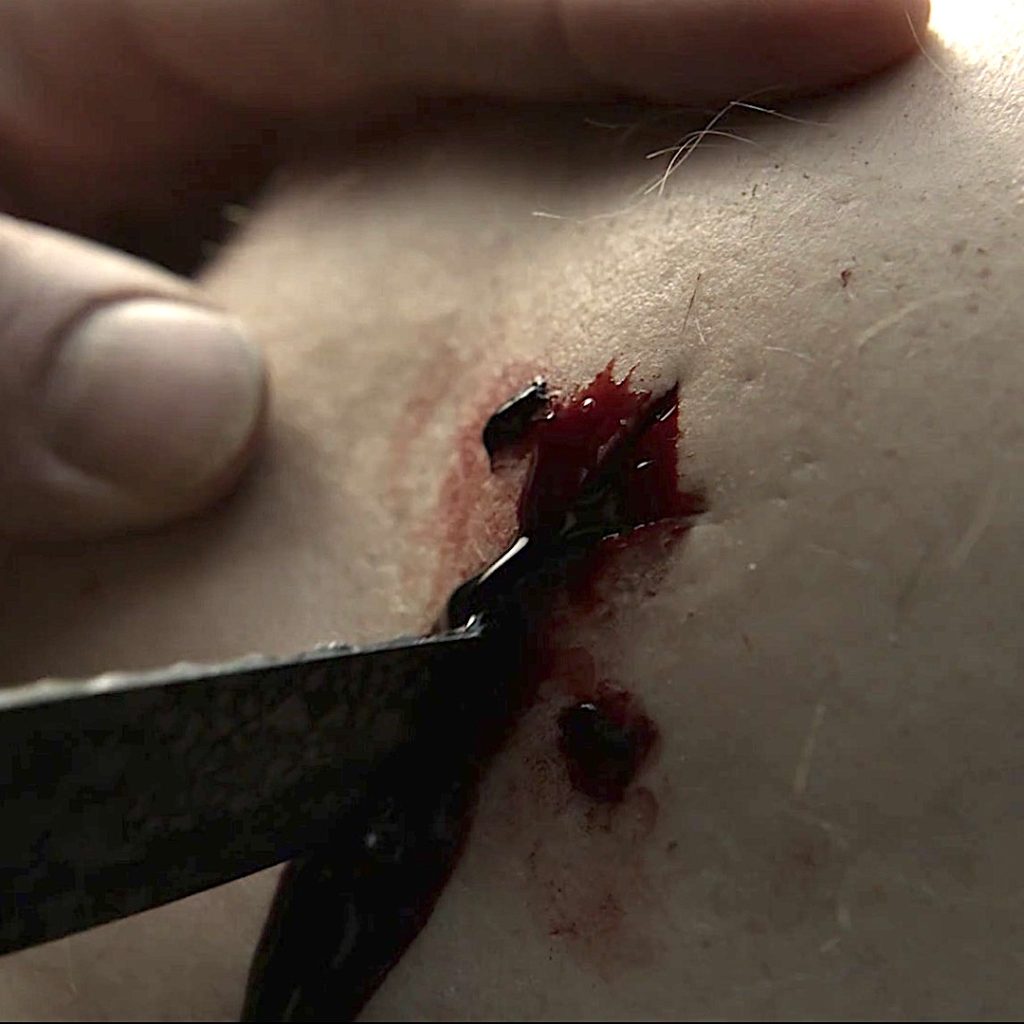
-
- Roger sucked out blood and venom!
There was no panic, but his sense of urgency was rising. How fast did venom spread? He had no more than minutes, maybe less. Roger sucked as hard as he could, blood filling his mouth with the taste of hot metal. He sucked and spat in quiet frenzy, blood spattering on the yellow leaves, Fraser’s leg hairs scratchy against his lips. With the peculiar diffusion of mind that attends emergency, he thought of a dozen fleeting things at once, even as he bent his whole concentration to the task at hand.
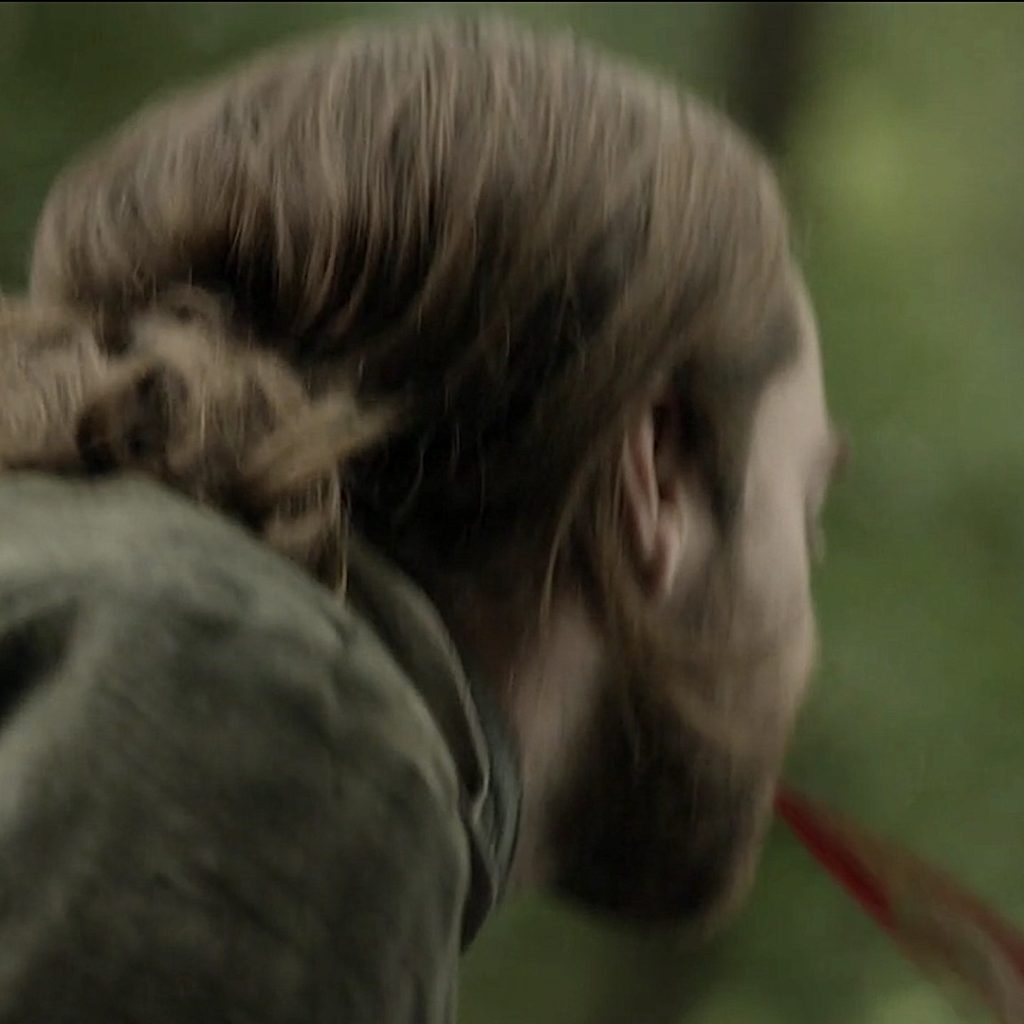
-
- Roger gave Jamie alcohol!
“I’m pleased to hear it,” Fraser said. “But I think I’ll take a bit o’ the whisky now. Draw the cork for me, aye? My fingers willna grasp it.”
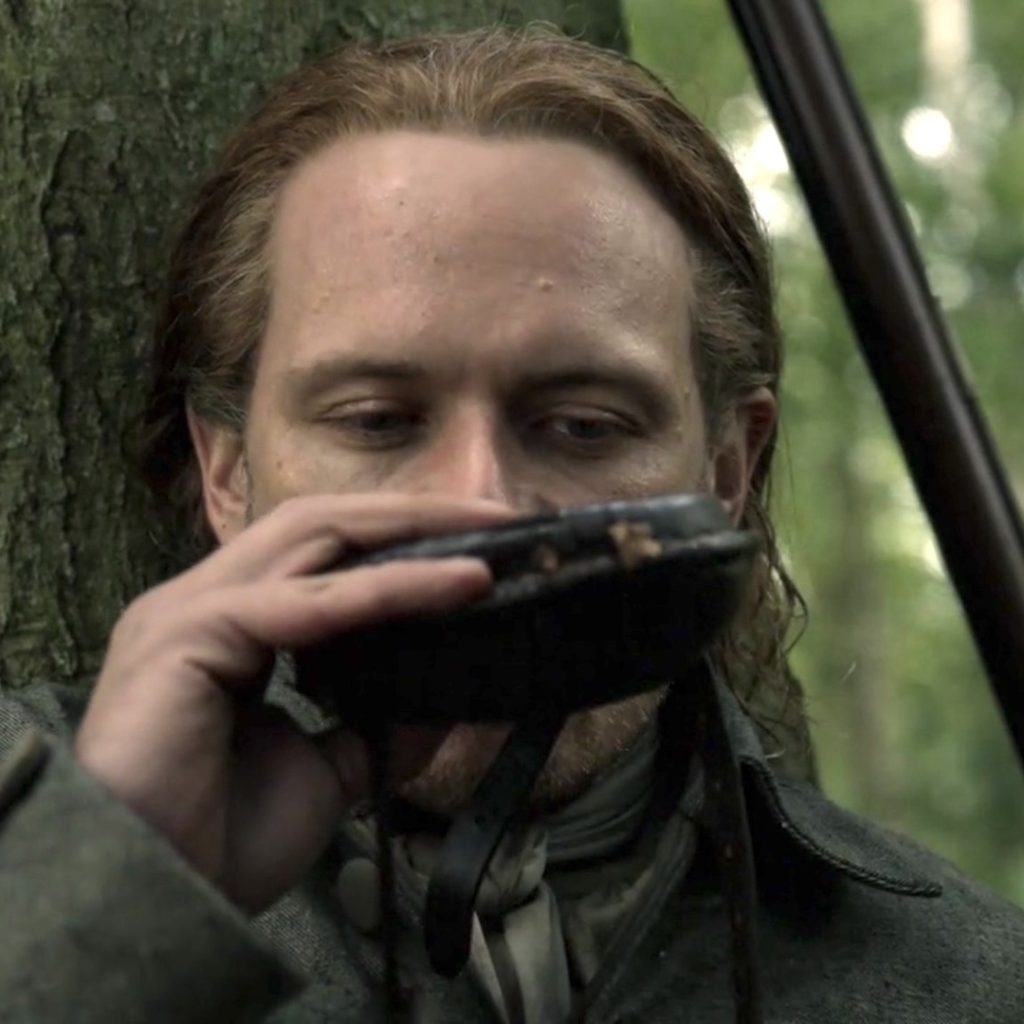
-
- Did Roger (or Jamie) apply a tourniquet? Does it matter?
- Jamie’s sock and boot remain on the injured leg.
- His heart is above the wound.
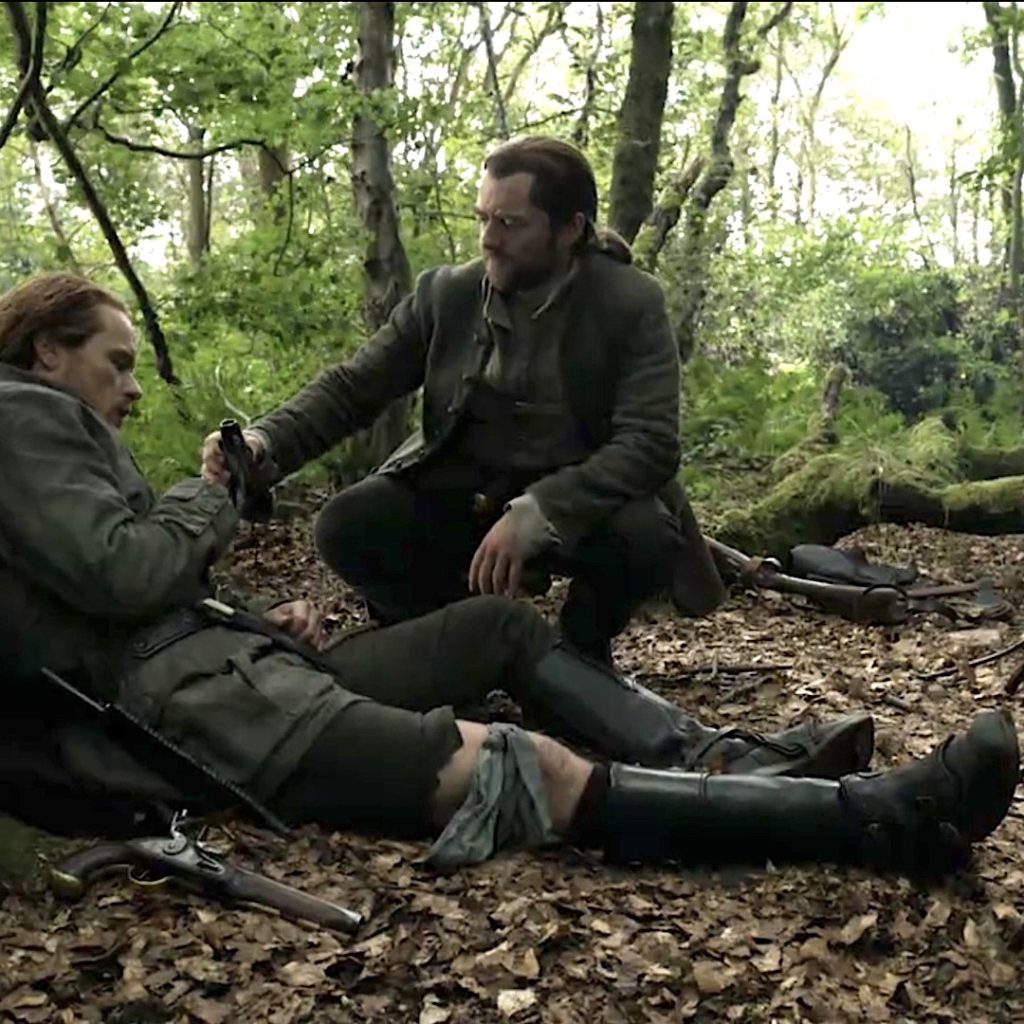
Snakebite Experts: Now, what do today’s experts have to say?
Experts recommend snake bite victims, DO NOT:
-
-
- Cut the wound 🚫
- Suck out the venom 🚫
- Apply a tourniquet, ice, or water 🚫
- Give alcohol, caffeinated drinks, or any other medications 🚫
-
Experts recommend, DO the following:
-
-
- Note the snake’s appearance and describe to medical unit (Roger saved head) ✅
- Move victim beyond striking distance of the snake (no need!)
- Lay victim down with wound below the heart ✅ (he did)
- Keep person calm and at rest ✅ (he did)
- Cover wound with loose, sterile bandage ✅
- Remove any jewelry from area that was bitten (no need)
- Remove shoes if leg or foot is bitten 🚫 (oops!)
- Get the victim medical help (Claire’s surgery!) ✅
-
Grading time! Hum…. 🤔 Looks as if Roger got 5 of 10 possible actions or 50%! Erm, even grading on a curve, this is a failing grade! 😱
Can Roger’s performance be explained? Should we be upset with Roger?
Yes and not at all!!!
Snakebite instructions from the 1960s, when Roger went back through the stones, were very clear. All first aid manuals listed the same advice. Even Boy Scout manuals contained these instructions:
-
-
- Cut the wound
- Suck out the venom
- Apply a tourniquet
-
But, science marches on and knowledge improves! We now know what to do and what not to do in the event of a venomous snake bite.
See Roger wrestle with Jamie’s snake bite in Outlander episode 509, Monsters and Heroes!
Roger is a hero….and, Himself is still here! 👏🏻👏🏻👏🏻
Fangs to Roger!
The deeply grateful,
Outlander Anatomist
Follow me on:
-
- Twitter @OutLandAnatomy
- Join my Facebook Group: OutlandishAnatomyLessons
- Instagram: @outlanderanatomy
- Tumblr: @outlanderanatomy
- Youtube: Outlander Anatomy
Photo Credits: Sony/Starz; www.ncwildlife.org

